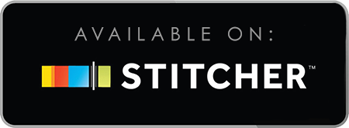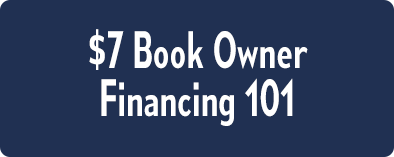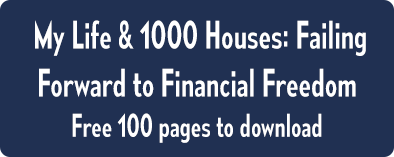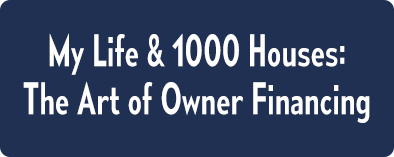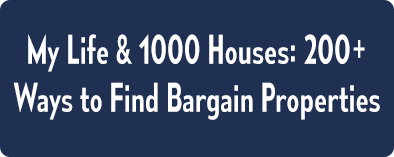PODCAST
Software To Balance Your Stock Market Portfolio With Nick McCullum


Mitch Stephen chats with
Nick McCullum
Episode 452: Software To Balance Your Stock Market Portfolio With Nick McCullum
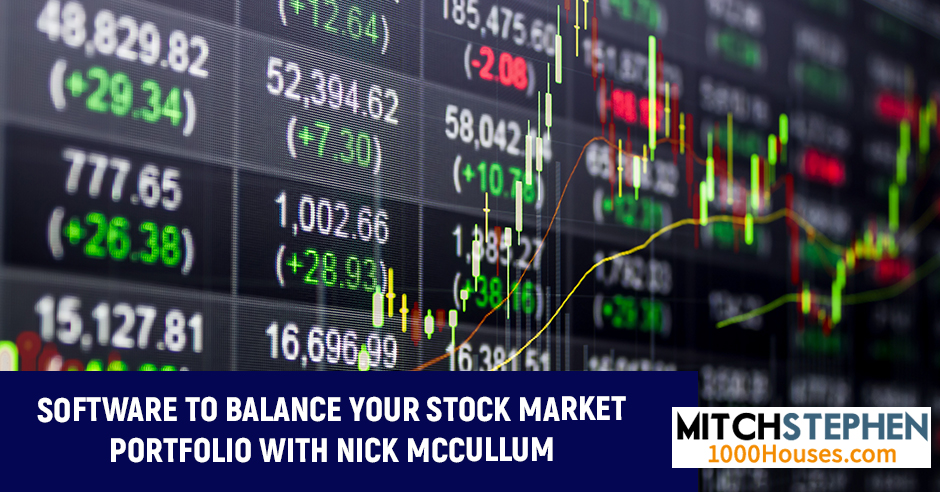
Balancing your stock market portfolio is a tedious task that means spending hours and hours on your spreadsheets. For most people, if not all, they would do everything to bypass this time-consuming work. This is precisely what Nick McCullum of Passiv had in mind when they did the unthinkable: create a software that will make the stock market portfolio management not only fast but also hassle-free. He joins Mitch Stephen to present the essential aspects of Passiv, their potential competitors, as well as the eBook he has written.
—
I’m here with Nick McCullum. He’s talking to us about software that will help you allocate your profits from your stocks and bonds, and rebalance your portfolio. Before we get on to that conversation, let’s say hello and thank you to our sponsor, TaxFreeFuture.com because you don’t have any idea what your financial adviser is not telling you. We’re going to tell you what they are not telling you and why they are not telling you. Check out their website. Learn how to take control of your own financial future. Learn how to invest in what you want to invest in. It has a lot to do with Self-directed IRAs, 401(k)s, health and educational savings plans but you’re in control. You have checkbook control and you decide what you invest in. TaxFreeFuture.com, thank you. Nick, how are you doing?
I’m excited to talk to you, Mitch. How are you?
Machine learning is the idea that you can use computers to make predictions using data sets. Share on XI’m good. Where are you physically sitting right now? What city? What state?
I’m in Canada right now in Fredericton, New Brunswick.
Are you from Canada or you just happen to be living there now?
I was born and raised in Canada. I spent my career going back and forth between Texas, where I know you were at and Canada, which is home for me.
People don’t know but Canadians have one hell of a rodeo, so do Texans. There’s a deep connection right there if you’re on that side of the fence, cowboy and all that stuff. You guys have some pretty damn good Calgary Rodeo.
The Calgary Stampede is probably what you’re thinking of.
Give us a little background. Who is Nick McCullum and why should we listen to you?
I’ve been working in professional investment management and software development my entire career. I’m passionate about helping to empower investors through education. I’m also passionate about building tools to help investors achieve better long-term financial income. That’s what we do at Passiv. I’m happy to talk about it with you on the show.
Let’s talk about exactly what Passiv is. What does it do? Why was it important to design this software?
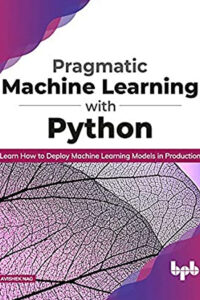
Pragmatic Machine Learning With Python
Passiv is a modern portfolio management tool that allows you to automate investment management within your own brokerage account. The best way to understand what Passiv does and who we’re aiming to help is to understand the problem that we’re trying to solve for people. If you think about the early days of Passiv, the original prototype of Passiv was built by one of our co-founders, Brendan Wood. He’s our CTO and he’s a software developer. The problem that Brendan was encountering when managing his investments is that he was managing his own retirement portfolio, his wife’s retirement portfolio and two education savings plans for his kids. Each one of those accounts had a different asset allocation that he wanted him to be invested in a different target portfolio. He kept track of all of this using a big Excel spreadsheet.
He would put in the holdings within each account, he would put in what he wanted to be invested in, his contributions and the Excel spreadsheet would do all these calculations to tell him what he needed to buy or sell to get invested into his target portfolio. Once that was done, he would log into his brokerage account and execute all of his trades. That indeed solves the problem but it’s high touch and labor-intensive. Brandon wanted a way to automate all of that and make it frictionless. That’s where the original prototype of Passiv was conceptualized. What Passiv enables you to do is you can create a Passiv account, link your Passiv account to your brokerage account, and then you set a target portfolio in Passiv which is the mix of stocks, bonds and ETFs that you want to own along with the weights for each of those investments.
One example of a simple target portfolio might be a portfolio that’s 50% invested in Apple and 50% invested in Tesla. That’s a simple two–stock model portfolio but it can get a lot more complicated than that. Passiv does all the legwork once you’ve set your target portfolio to determine the capital and the trades that you need to make to get invested in that target portfolio. You’ll be buying some things or selling other things. Passiv allows you to rebalance with one click. We send the trades off to your brokerage, they can execute it, the brokerage sends us back trade confirmations, then we update your dashboard. After that, Passiv monitors your account every day so that whenever it’s time for you to log back in and rebalance, you’ll get an email notification to do so.
You found a need and you filled it. I love entrepreneurs. Is this an original idea or you have competitors out there?
We’ve never encountered another company doing exactly what Passiv does. I would say our main competitor just like what Brendan experienced is Microsoft Excel. People who are using spreadsheets to manage their own portfolios and a less comparable competitor would be a true roboadvisor that takes your assets and invested in a model portfolio based on a questionnaire that you fill out for them. Those would be our two main competitors I’d say.
So much of the financial services industry is hard for people to understand. Share on XI can say there’s nothing better than taking all the work that it requires to keep a spreadsheet up–to–date if you have a rental house portfolio, mortgage notes or stock portfolio. It is very rewarding when you finally get that spreadsheet and all the formulas in it so that it will calculate everything you need to do. Every time you change one little thing, it resets the whole spreadsheet so that you don’t have to go through and do all this stuff manually. That is very rewarding, very nice and great time savers. What’s the goal of your company? How long have you been in business?
Passiv was founded in September 2017. Our mission as a company is to make DIY investing accessible to everyone. The main focus of our energy in that aspect is by building an amazing software tool that people can use to manage their investment portfolios but we’re also passionate about empowering investors through education. We want to make DIY investing accessible through tools and education for investors around the globe.
Sometimes, I’m a connector on this show. Have you known a guy named Sean Tepper?
No, I don’t.
I’m going to introduce you two guys because you might be a magical fit together. You’ve given some examples of stuff. What else do I need to know? Do you have any giveaways? Is there any trial on this?
For people who are curious about how Passiv works and want to potentially use it to manage their own portfolios, I’ll say two things. The first thing is we have a free version of Passiv that you can use with no money down or anything like that. You can go and try it and see if you like it. The other thing is that if you decide to upgrade to the paid version of Passiv, we have a no–questions–asked satisfaction guarantee. If you try it and you don’t like it, we will refund you and that’s the end of that story. If you’re curious about our pricing, I’ll explain that briefly. We wanted our pricing to be as simple and as transparent as possible because so much of the financial services industry is hard for people to understand and we wanted to change that. Passiv is priced very simply. It’s $99 a year, paid with your credit card. We never take money out of your brokerage account or anything like that.
That seems very reasonable. I saw in your bio, there’s an eBook, Pragmatic Machine Learning. How does that fit in or does it?
That’s a personal project that I wrote to help educate people about how to implement basic machine learning techniques using some Python code.

Stock Market Portfolio: Anyone can get more sophisticated with Passiv and use its machine learning to do even more technological advancements.
What does machine learning mean? What are we talking about?
Machine learning is the idea that you can use computers to make predictions using data sets. A simple example of a machine learning algorithm would be linear regression. If you guys ever took statistics or anything like that in high school, that’s the whole idea of finding the line of best fit through a data set and then use the line of best fit to make predictions outside of the data set or within the data set. That’s one simple example. You can get way more sophisticated with that and use machine learning to do things like programmed self-driving cars if you were an engineer at Tesla.
Is there anything you’d like to say to the audience? I think we got a good idea here. I want everyone to go to 1000Houses.com/Passiv. Is there anything I should add to that, Nick?
If anyone has any specific questions or if they’d like a demo of the software, please feel free to email me. My email is Nick.McCullum@Passiv.com.
I’d like to thank everybody for stopping by to get you some Nick McCullum and learn about Passiv.com. I’d like to thank my sponsor, TaxFreeFuture.com for sponsoring this episode.
Important Links
- 1000Houses.com/Passiv
- 1000Houses.com/Grow
- 1000Houses.com/Livecomm
- 1000Houses.com/100
- 1000Houses.com/101
About Nick McCullum
 They did the math and realized that those expensive investment products would add years to their working life, because high management expense ratios (MERs) dramatically slowed the growth of their nest eggs. From there, they turned to passive investing, a strategy that involves buying and holding index funds that follow the market, rather than actively picking, buying, and selling stocks in an effort to “beat the market”. Since index funds don’t require active management, the management fees are significantly lower – about 10x lower than fees associated with actively managed investments like mutual funds.
They did the math and realized that those expensive investment products would add years to their working life, because high management expense ratios (MERs) dramatically slowed the growth of their nest eggs. From there, they turned to passive investing, a strategy that involves buying and holding index funds that follow the market, rather than actively picking, buying, and selling stocks in an effort to “beat the market”. Since index funds don’t require active management, the management fees are significantly lower – about 10x lower than fees associated with actively managed investments like mutual funds.
While passive investing takes less time than active investing, the Brendans found there were still tedious aspects to managing your own investments. For instance, whenever new contributions or dividends hit your account, you need to calculate which assets to buy, and how much of them you need to buy to bring your portfolio back to its target allocation. This meant spending hours on manual data entry and endless spreadsheet calculations. So Brendan Wood decided to build a tool that freed them from monotonous tasks by automatically calculating the trades needed to keep a portfolio close to its target allocation. They then realized that other investors would benefit from this tool, and Passiv was born.
Since then, the Passiv team has grown (there’s even a third Brendan!) and hundreds of Canadians are now managing their money with Passiv, saving on management fees and spending less time with Excel. Let Passiv do the same for you.


